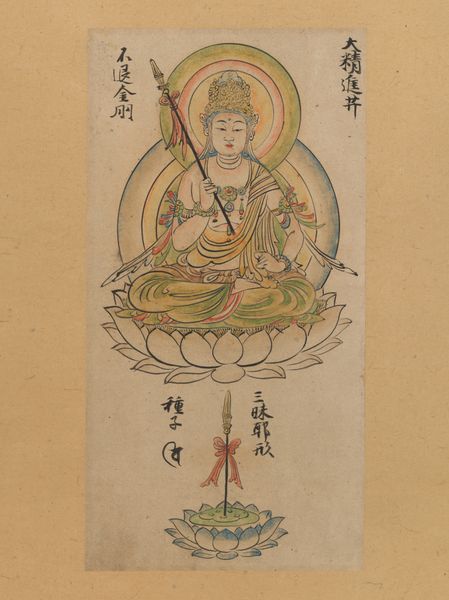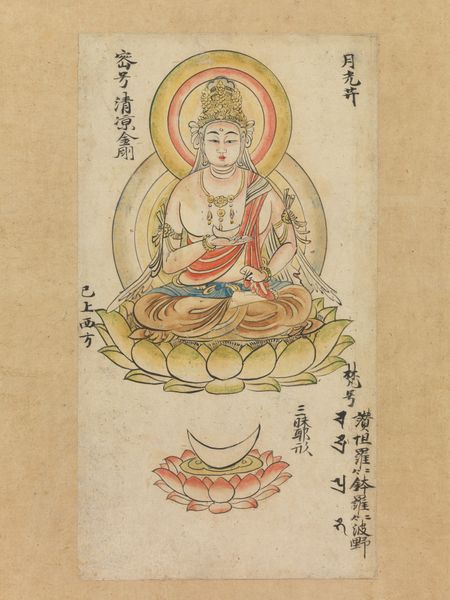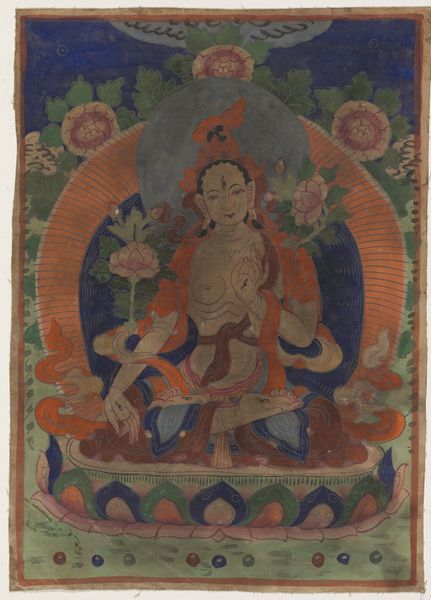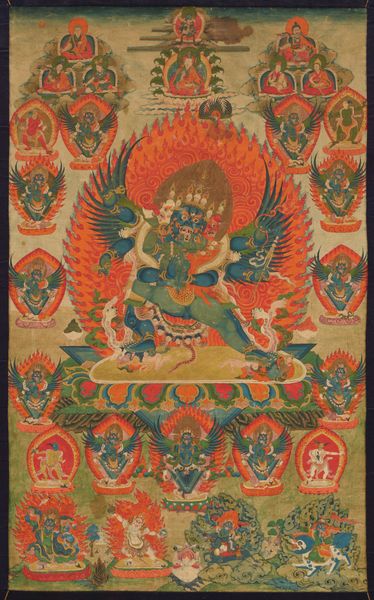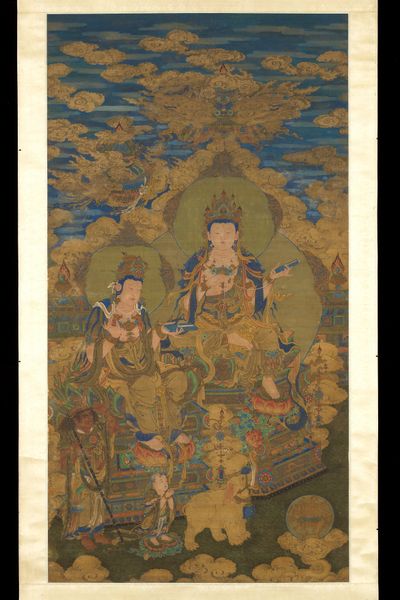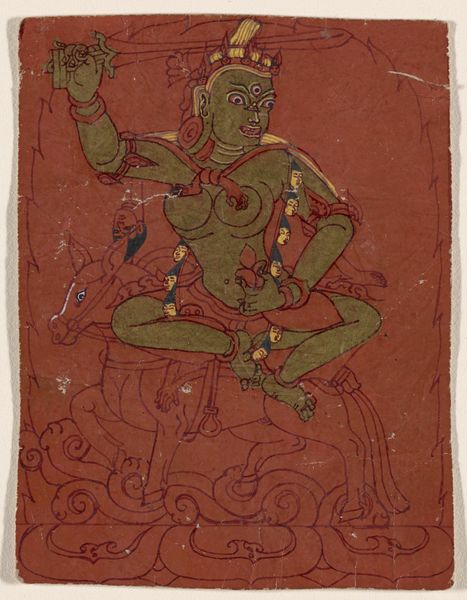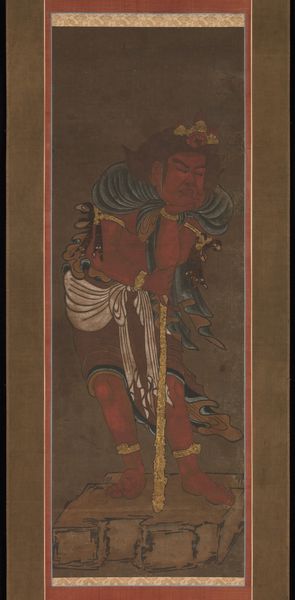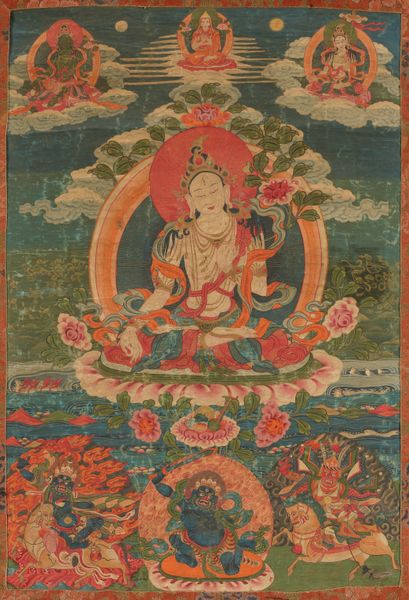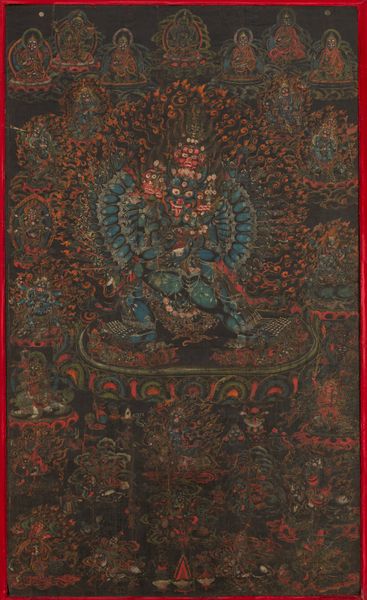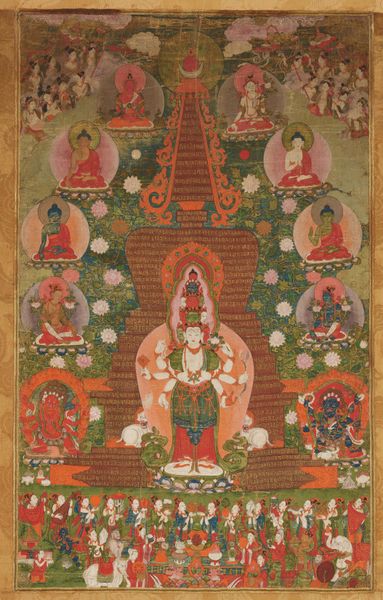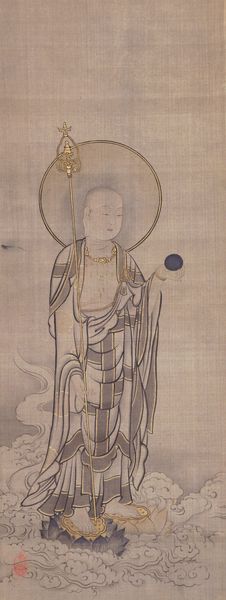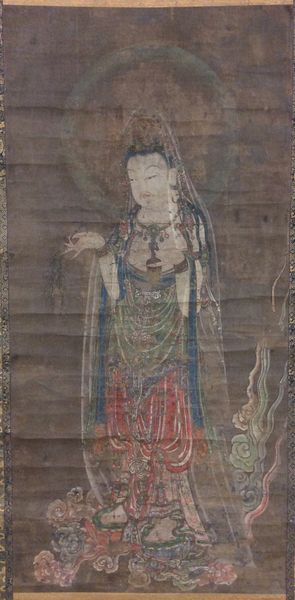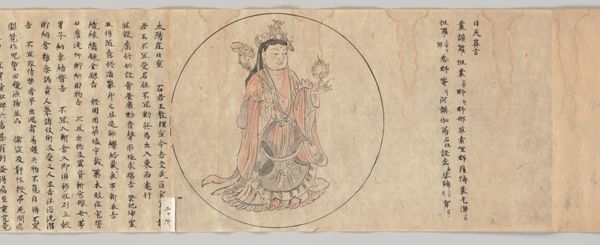
tempera, painting, ink
#
tempera
#
painting
#
asian-art
#
figuration
#
ink
#
abstraction
Dimensions: (a.) 22 1/2 x 16 5/8 in. (57.2 x 42.2 cm); (b.) 11 1/2 x 52 1/4 in. (29.2 x 132.7 cm)
Copyright: Public Domain
Curator: Here we have a remarkable piece of Asian art, dating roughly between 670 and 797. Known as "Two Buddhist Paintings," the works now reside here at The Met. Created with ink and tempera. It really shows how art and religious practices are interwoven. Editor: Immediately striking! There is something ethereal in its presentation and damaged condition. The color palette gives off an earthy tonality. Despite depicting spiritual iconography, the artist made it look raw, stripped from all the common perceptions of sanctity, like an honest, real, but somehow damaged message from a bygone era. Curator: It's fascinating how these pieces managed to survive the ravages of time and history. This type of art served not only to enhance faith but was often employed by political elites to affirm their legitimacy, by association to powerful imagery. Consider the resources required to commission such artworks and their display in prominent locations like temples. Editor: Yes, seeing it displayed like this in a modern museum space invites reflection on cultural appropriation, the role of museums as colonial institutions and our relation as observers in contemporary society, while the symbolism remains lost in the tides of time. Who are we to judge? It almost demands humility from us as onlookers. Curator: Museums do hold an important role as gatekeepers. They give art context but risk sanitizing politically-charged messages by neutralizing the object in sterile gallery spaces, as you said. Editor: Well, here is this, as art historian, aren’t you partially responsible for that? Curator: It's a fair point. Scholarship is inevitably influenced by its context. But by presenting art openly, institutions open the discourse around historical works. Editor: Indeed. Looking at the cultural narratives, one may understand what we can salvage to project new horizons or futures. These paintings serve as reminders.
Comments
No comments
Be the first to comment and join the conversation on the ultimate creative platform.
